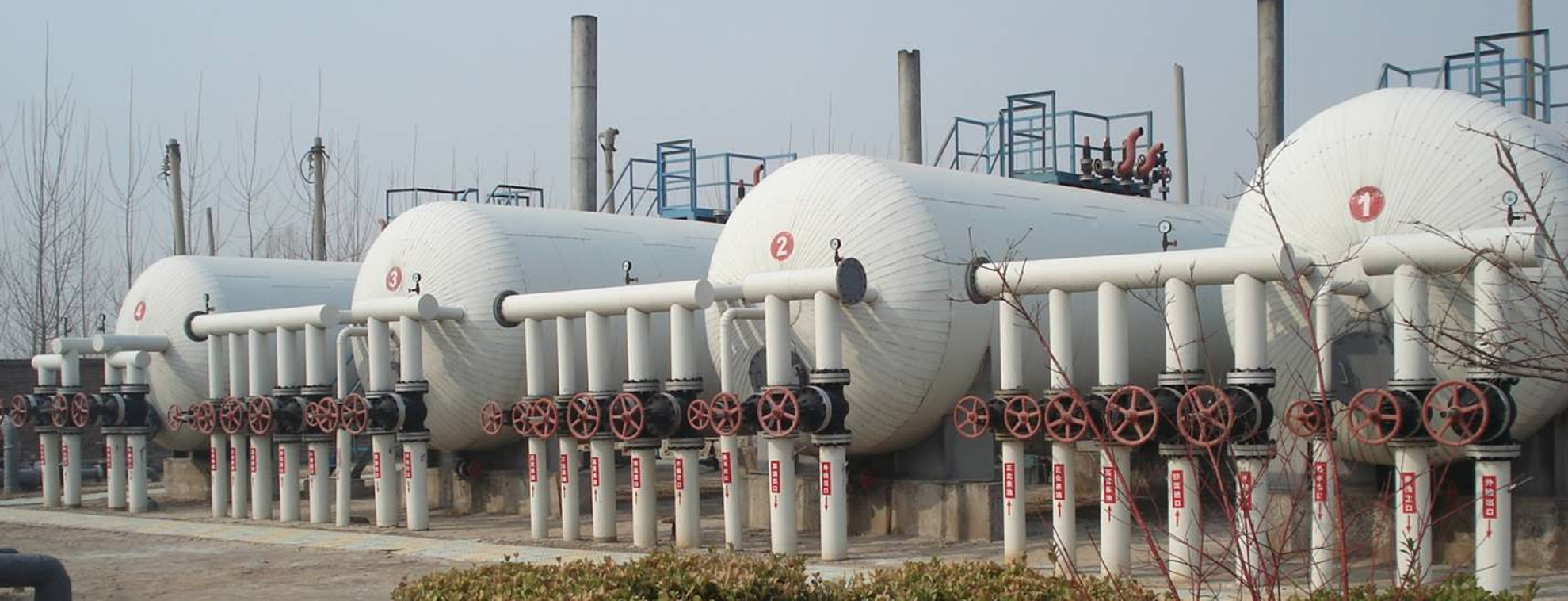Oil Gathering Station, China – separation oil and water by using heat
In this gathering station oil and water is separated. The process is supported by heat which is introduced in the system. The major problem in this system is the corrosion. As the field is next to the Chinese Sea, a lot of brackish water is used to pressurize the reservoir. Together with this brackish water a lot of salt is pumped in the reservoir, which makes the produced water very aggressive. The crude is processed further down stream, whereas the produced water is pumped back in order to support the pressure in the wells. Lately the customer found a high content of SRB in the produced water. This is assumed to add to the corrosion found in the system. The corrosion is measured in the standard way using corrosion coupons.
The corrosion limit is set by the client to 0.0076mm per month, the actual values are far above. This means the life time of the equipment has shortened drastically. The SRB value is too high as well, whereas 100 cfu/ml are accepted the actual values reached 6000 and more. as can be seen in the table above. All these values are average of one month, where the single values where added to each other and then divided by the number of samples/ measurements taken.
Merus was installed sometime beginning of June, at all the feed lines to the monitored vessel. In order to evaluate the progress of Merus we compared the average corrosion rate 4 month before the installation and 4 month after the installation. The month of installation was not considered, because Merus hasn’t been all the time there, no clear evidence was to be expected. If we take the average of the 4 month before, which are marked in red and the average 4 month after the installation marked in green we come to following result:
Corrosion rate before Merus: 0.14325 mils per month
Corrosion rate after Merus: 0.015775 mils per month
This result is very clear the corrosion rate is in the second period almost 10 times less then in the first period. Merus hasnt achieved to reach the specified target from the customer, but having 10 times less corrosion, indicates the equipment will last far longer as it is today.
At the same time we have looked in the SRB, which are made responsible for the high corrosion rate. Here the results are not as clear. This might have to do with the difficulties making such measurements. But there is a trend there are less SRB as well, but compared to the corrosion rate there seems to be a mistake.
This phenomena Merus has seen before in other places as well. It looks like even if the SRB are still there, with lower value, but still there, the corrosion lowers more significant. From theoretical point of view we see a correlation, but this is too soon to talk here about this. We will focus on this matter, and update our web page as soon there is evidence available.
Conclusion:
There is very clear evidence there is
- far less corrosion taking place in the system
- less SRB, but not reduced in the same way as the corrosion
Having 10 times less corrosion has a very big impact in to the life cycle of this system. We know from pipelines with a expected life time of 30 years, the life time is down to less then 5 years looking at the actual corrosion rates.

